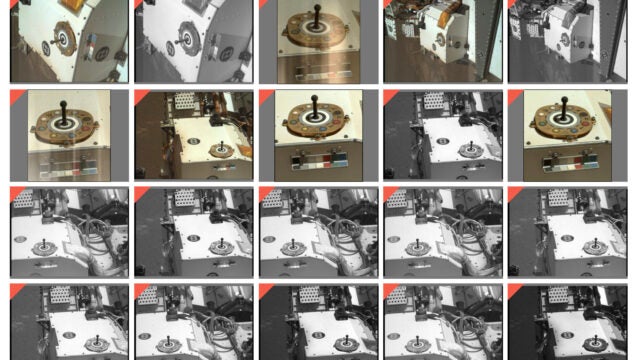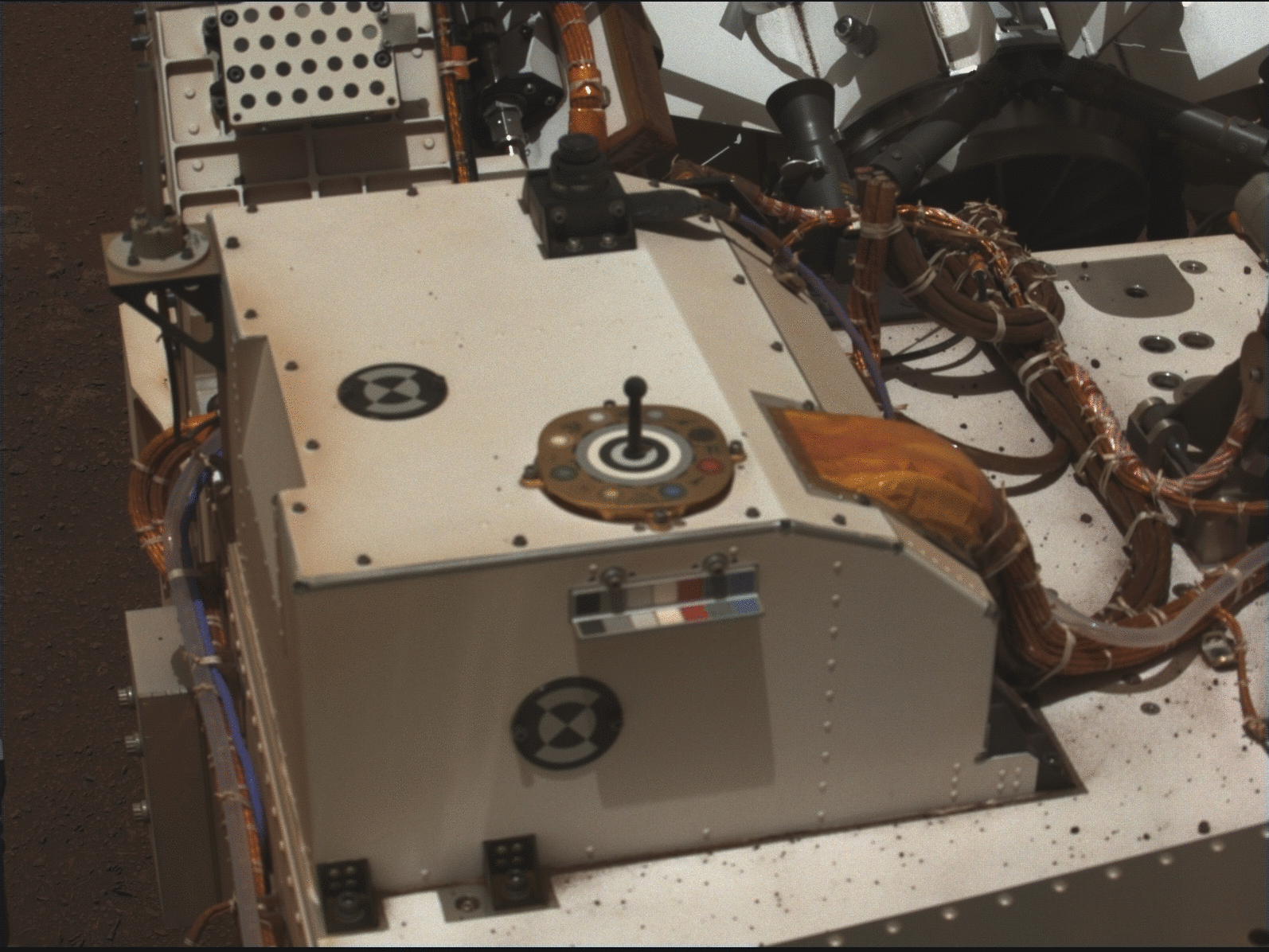
2021-03-19
Caltarget Fiesta! Why is Perseverance taking so many Mastcam-Z calibration target images?
by Christian Tate, Tina Seeger, Nathalie Turenne, Sammie Jacob, and Ken Herkenhoff
The Mastcam-Z cameras on the Mars 2020 Perseverance rover have been capturing images of the surface of Mars in Jezero crater since sol 2. In order to process the images to show colors accurately, we need to first have a well-characterized standard on which to base our color corrections. For Mastcam-Z, this standard is our calibration targets (or “caltargets” for short). There is a primary target on the deck of the rover (Figure 1), and a secondary target nearby (visible in Figure 3). Extensive imaging of these small, color-reference caltargets was conducted on Earth before launch to characterize the properties of the colored and grayscale patches.

So why is Perseverance taking so many images of this little multi-colored, gold-plated, artistically-festooned feature on the rover deck? Since the first Mastcam-Z radiometric caltarget observation on Sol 2 (Figure 1), Mastcam-Z has taken over 170 images to date of the caltargets on subsequent sols (Mars days) at various Sun angles, focal lengths (zoom levels), filters, focus positions, exposure times, and camera pointings. We’ve tested the cameras’ auto-exposure and auto-focus capabilities using the target as well. So far, the primary Mastcam-Z caltarget appears to be the most-imaged object in Jezero crater!
Perseverance is only about one month into its surface mission, so most of its activities at this point are meant to understand how the various instruments operate in the Martian environment and to lay the groundwork for efficient operations in the future. For Mastcam-Z this involves finding the optimal settings to image the caltargets in order to properly calibrate and correct Mastcam-Z images to portray the colors of the Mars exactly right. This requires a large dataset of caltarget images to learn about how the cameras can best point and focus on them at different zoom positions, how their colors appear to change with time of sol, and how the slow accumulation of dust on their surfaces (plus the debris scattered onto them by the landing process) is changing their observed properties. Like it does everywhere on Mars, dust gently but persistently accumulates on the deck of the rover, blanketing everything–including the caltarget–in fine red particles. Over many sols, this slowly changes the caltarget colors. Early in the mission, the color patches are relatively clean and free of dust; imaging them well now is thus essential to track the magnitude of dust accumulation over time, and to help us correct for dust effects in the future. The Mars Science Laboratory Curiosity rover has a very similar caltarget for its Mastcam instrument (the older brother of Mastcam-Z), which demonstrates the inevitable dust accumulation over time (Figure 2).

(from Bell et al. (2017) Figure 4).
The Mastcam-Z operations team are also determining the best camera pointing, focus positions, and zoom focal lengths for imaging the caltargets. This involves some trial and error, where the camera settings are tweaked to make the images more in-focus and better centered in the frame. All of this takes time and many images are needed for the Mastcam-Z cameras and Remote Sensing Mast pointing behaviors to be fully characterized and understood. Once we get this all figured out, the cameras will be able to compare different rocks or soils to one another from different sols or to compare the color properties of rocks and soils from Mars to terrestrial samples in laboratories on Earth.
Mastcam-Z is not the only camera imaging the caltargets. The Navcams mounted to mast on the far left and right sides of the Mastcam-Z’s and the SHERLOC WATSON imager on the robotic arm have also taken pictures of our caltargets for pointing checks and double-checks on the color-calibration of those cameras (Figure 3).

Mastcam-Z is the first zoom-capable camera system to be sent to Mars (Figure 4). The figure below shows how the cameras have zoomed in on the caltargets during our first month of operations. It’s exciting to be part of Perseverance’s scientific achievements so far – which include the successful operation of zoomable cameras on Mars!

Credit: NASA/JPL-Caltech/ASU/MSSS